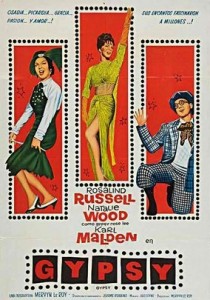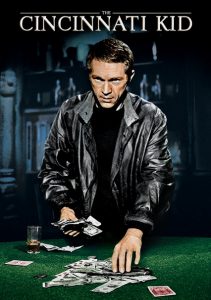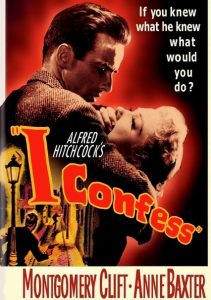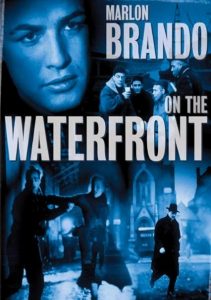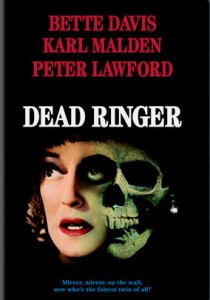A Streetcar Named Desire-1951
Director Elia Kazan
Starring Marlon Brando, Vivien Leigh
Top 250 Films #231
Scott’s Review #872
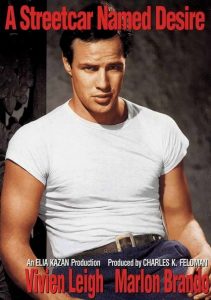
Reviewed March 2, 2019
Grade: A
A Streetcar Named Desire (1951) is an adaptation of Tennessee Williams’s dark and dreary Broadway play. The stellar cast includes three of the four original members of the stage version who brought the film to the big screen.
Tremendous acting and a morbid southern setting will leave the viewer transfixed and wondering what chaos and drama will next unfold. The story is sad, pitiful, and quite heavy as each character suffers guilt, resentment, rage, or regret, but these elements make the film a pure classic.
Aging southern belle Blanche DuBois (Vivien Leigh) has lost her valuable southern plantation and flees her aristocratic livelihood to New Orleans to live with her working-class sister Stella (Kim Hunter) and brother-in-law Stanley Kowalski (Marlon Brando).
Unhappy, Blanche immediately begins acting snobbish compared to regular people and offends many with her prim and proper manners.
Stanley feels slighted by Blanche, who is convinced she is keeping Stella’s inheritance. This leads to conflict. Stanley meets Mitch (Karl Malden) and may have a shot at happiness.
Blanche is the most painful and well-dissected character. A fun fact is that Leigh is the only Actor among the principal four who did not appear in the original stage version, where Jessica Tandy played the role.
Leigh was undoubtedly cast because of her star power at the time. She dives full steam ahead into the role, delivering the perfect blend of pathos and courage while adding the most complexity.
Reduced to a life among the poor and struggling, the reality is harsh for the once-wealthy heiress who has lost all her money through no fault of her own, her estate taken by creditors after her husband’s tragic death, assumed to be suicide.
Almost as complicated is Stanley, played stunningly by Brando, an actor who, with this film, was beginning to embark on Hollywood success that would surround him throughout most of the 1950s.
The most prominent film cover art features a tee-shirt-clad Brando, his muscular arms and torso on display, and his smoldering bad-boy pose. The sexual tension between Stanley and Blanche is undeniable, as their love/hate relationship is filled with unbridled passion.
Their carnal attraction is mainly due to the brutish masculinity that Brando exudes on camera.
The combined supporting performances by Kim Hunter and Malden are almost as complex as the leads, and they are just as important to recognize.
Hunter portrays Stella as wounded and put-upon, yet not weak. She has strength but is unsure who to trust or whether to leave her husband. Malden plays Mitch as benevolent and trusting, enamored with Blanche until her secrets are finally revealed.
Heartbroken, even he, the kindest character in the group, is left unhappy. Malden excels at imbuing Mitch with an everyman and graceful quality.
Who can ever forget the poignant and melancholy wails of “Stella! Stella! Stella!” emitted by the tragic Stanley, a moment forever remembered in cinematic history? He longingly begs for Stella’s forgiveness as he looks towards the sky.
The suggested rape, although not shown, is a powerful tidbit and controversial in the film for 1951. The audience not seeing the action is arguably as intense as having seen it, as the imagination can often be more prominent.
The black-and-white cinematography adds emotional treasures. It captures the bleak life in New Orleans, and the characters’ struggles and hardships are wonderfully portrayed.
The run-down tenement where most of the film takes place is dour, suffocating, and dingy, perfectly enveloping the characters’ lives.
Hopelessness and depression are commonalities as director Elia Kazan creates a film that grasps his audience and never lets go.
A Streetcar Named Desire is about conflict, pain, and the human desire for love and feeling thwarted by realism and dire circumstances.
Each of the four characters can be dissected, sympathized with, and is worthy of discussion. This only proves the complexities of each.
I challenge a good comparison to Who’s Afraid of Virginia Woolf? (1966) and A Streetcar Named Desire have similar qualities.
The film set an Oscar record when it became the first film to win in three acting categories (a feat only since matched by Network in 1976).
It won awards for Actress in a Leading Role (Leigh), Actor in a Supporting Role (Malden), Actress in a Supporting Role (Hunter), and Art Direction.
A Streetcar Named Desire (1951) is not an easy watch, but it is assuredly a feast of excellent acting and heartbreaking, wounded characters.
Oscar Nominations: 4 wins-Best Motion Picture, Best Director-Elia Kazan, Best Actor-Marlon Brando, Best Actress-Vivien Leigh (won), Best Supporting Actor-Karl Malden (won), Best Supporting Actress-Kim Hunter (won), Best Screenplay, Best Scoring of a Dramatic or Comedy Picture, Best Sound Recording, Best Art Direction, Black-and-White (won), Best Cinematography, Black-and-White, Best Costume Design, Black-and-White
